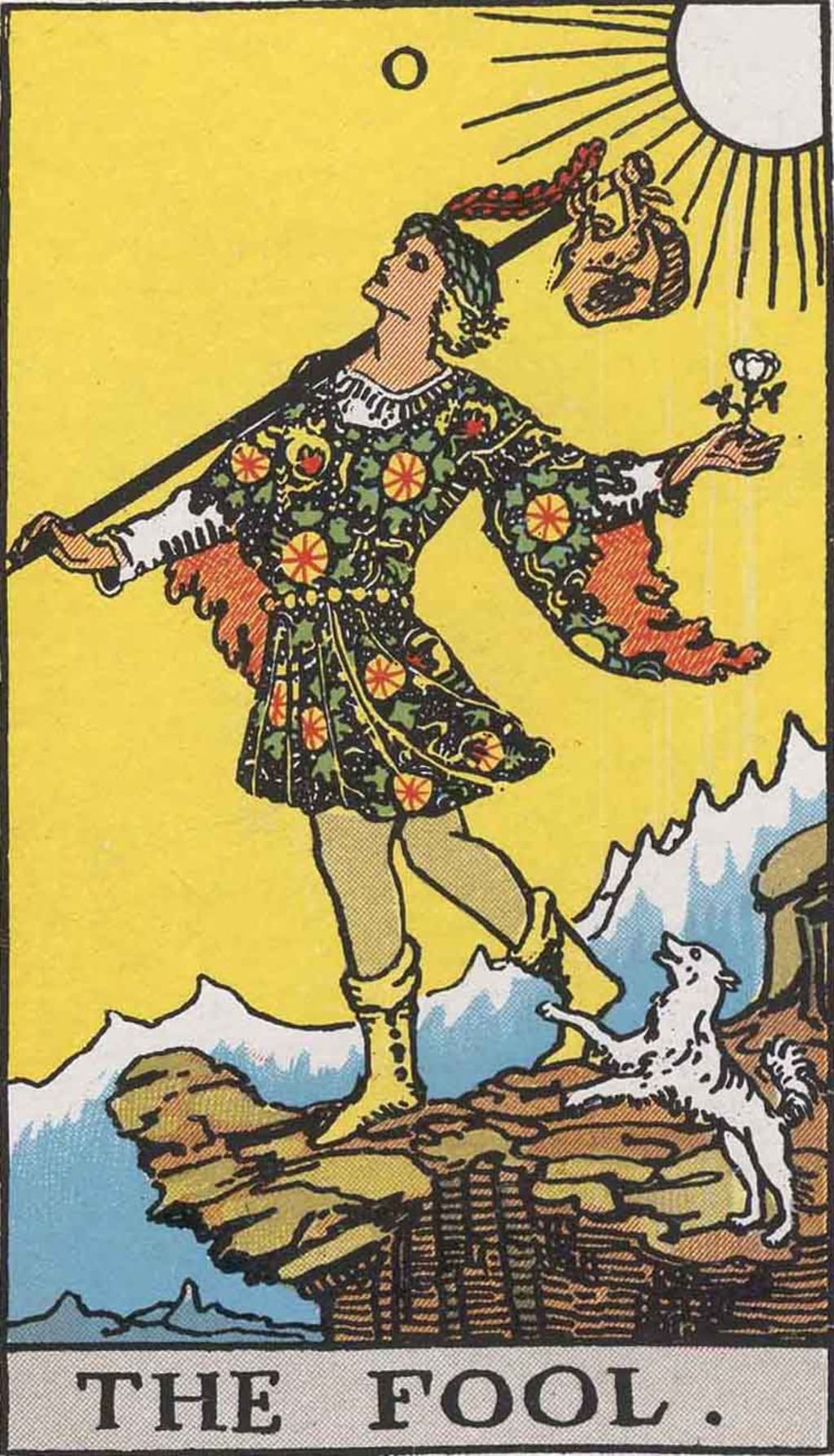
We begin our journey through the Tarot by examining the archetypal images that call forth psychic forces, forces which lead to interpretation of present and future events--the "is to be," in other words. Those cards are referred to as the "Major Arcana," and they represent long periods or great events and turning points in the life of the Questioner.
The origin of these sacred images is obscure--some claim they hail from ancient Egypt, or an even more remote period. Certainly, the game called tarocchi was popular in the Court of the Medici, and perhaps even farther back than that; the wandering Romani people early made use of them for fortune-telling purposes, even though, initially, they were simply a popular parlor game, such as faro. The Major Arcana (or "Trump Cards"), frequently represent those aspects of medieval life most easily recognizable to the illiterate: the Emperor, the Empress, the Hierophant (Pope), and even a female Pope (as in the ancient story of Pope Joan), the "High Priestess." There are concepts and images, such as The Devil and Judgement, borrowed from the Bible; also, Death, the Sun and the Moon cards; these images are easy enough to recognize, and immediately strike a psychic chord. Some cards, such as The World, lend themselves to a more esoteric interpretation, and their meaning must have been, for common people, on the whole more obscure.
To begin: There are twenty-two cards of the Major Arcana; twenty-one, depending on if you count the numberless card. That card, The Fool, is numbered as zero in the deck, and it begins what we might think of as the "Fool's Journey," beginning a walk-through of the various stations of the Major Arcana, the evolution of the symbols as they point to the inward progression of the Querent or questioner. For the purposes of this handbook, however, esoteric interpretations are not, strictly speaking, that important. The only thing to KNOW is that The Fool represents "starting fresh," starting anew or beginning again; a journey that, hopefully, will see the Questioner move toward a positive pathway. Along the way, he or she is bound to make a mistake, or many of them; multiple blunders even.
As a matter of fact, if you look closely at the card itself, The Fool, his belongings slung over his shoulder (suspended from a stick, in the manner of old-fashioned hobos), his head held merrily high, as if he might be whistling a tune, is about to seemingly have a bad accident. (At his heels, also, a little dog is nipping.)
He seems jaunty and completely oblivious to the fact that he is about to walk off a cliff. His head is in the clouds. Such people can be lightning rods for negative results, negative karma; they are the ones who, like Charlie Chaplin, always seem to end up with their foot caught in a bucket, a victim of the most unfortunate of circumstances; circumstances they could have, most likely, avoided, if they had taken a few more precautions or made some different choices, farther up stream.
Yet, their optimism, and their sense of inner-guidance, always seem to carry them through.
It is well to remember the old saying here: "There's a special God for drunks and children." The Fool, after a fashion, represents the qualities of both.
The fact that The Fool is numbered the "zero" card, having, quite literally, no beginning and no end (calling to mind the Ourobourous, the snake eating its own tail), also marks out that it is a card of rebirth, having no fixed point, but representing Eternal Return.
Other readings of the image suggest folly or extravagance, a person NOT watching out where he or she is going, and someone who is quite simply, "playing the fool"; i.e. behaving badly. Reversed, it suggest the child-like simplicity of the fool turned on its head, suggesting delirium, or even intoxication. Most certainly, a Reversed Fool represents a pattern that is self-destructive.
It is interesting to note that, if you look closely at the image of the tunic the fool is wearing, it seems as if it is embroidered with the ancient Sun Wheel. Modern variations of this suggest a symbol whose chief evocation is the forces of CHAOS. The Sun, of course, ALSO represents the dawning of the New Day, or the setting out anew.
Finally, it will be up to the Reader to decide the ultimate significance of this fool, based on the relative position of the card in the reading, and the accompanying cards surrounding it. All interpretations given here are those of the author, based on his own research and general experience.
About the Creator
Tom Baker
Author of Haunted Indianapolis, Indiana Ghost Folklore, Midwest Maniacs, Midwest UFOs and Beyond, Scary Urban Legends, 50 Famous Fables and Folk Tales, and Notorious Crimes of the Upper Midwest.: http://tombakerbooks.weebly.com
Enjoyed the story? Support the Creator.
Subscribe for free to receive all their stories in your feed. You could also pledge your support or give them a one-off tip, letting them know you appreciate their work.






Comments
There are no comments for this story
Be the first to respond and start the conversation.